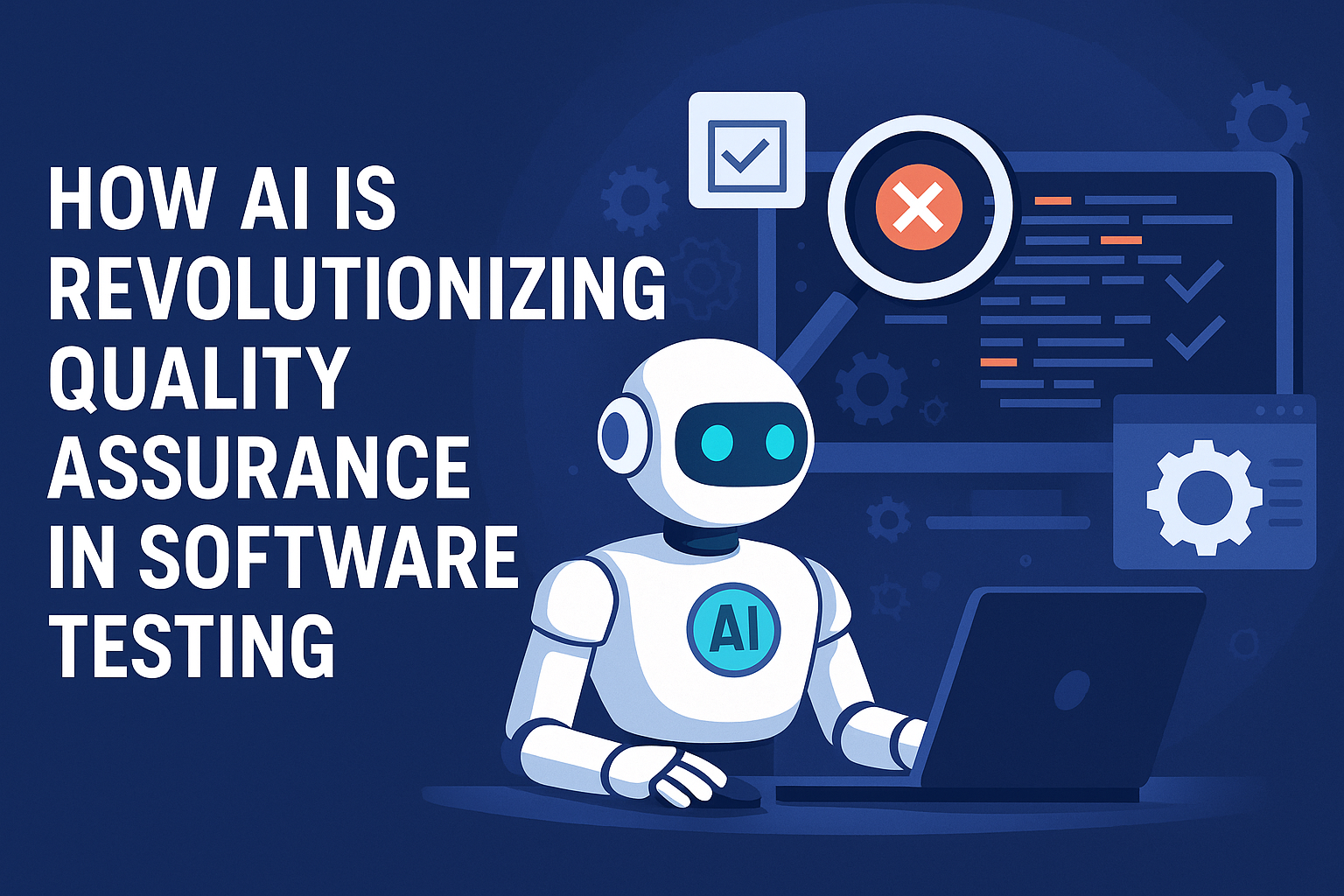How AI Is Revolutionizing Quality Assurance in Software Testing

In the ever-evolving world of software development, quality assurance (QA) has always played a pivotal role. With the rise of complex applications and shorter development cycles driven by Agile and DevOps methodologies, the need for faster, smarter, and more efficient testing has never been greater. Enter Artificial Intelligence (AI) — the transformative force that's reshaping how QA teams approach software testing.
This blog explores how AI is revolutionizing quality assurance, the benefits it brings, practical use cases, and the challenges ahead.
📌 Why Traditional QA Falls Short
Before delving into AI, let’s understand the limitations of traditional QA:
Manual testing is time-consuming and error-prone.
Script-based automation requires constant maintenance as code changes.
Regression testing becomes overwhelming with each product release.
Test coverage can often be incomplete or imbalanced due to time and resource constraints.
These challenges create bottlenecks in the development pipeline, especially in fast-paced environments.
🚀 Enter AI: A Paradigm Shift
AI brings a paradigm shift in QA by introducing automation with intelligence. Instead of just executing predefined test cases, AI-powered systems can:
Learn from previous test runs
Predict potential points of failure
Adapt to code changes without human intervention
Optimize test coverage and prioritize critical paths
The result is faster, smarter, and more efficient QA workflows.
🔍 Key Applications of AI in Software Testing
1. Test Case Generation
AI algorithms can analyze application code, user stories, and historical defect data to generate relevant test cases automatically. This reduces the effort in writing test cases manually and ensures higher coverage.
Example: Tools like Testim and Functionize use machine learning to create dynamic test scripts based on UI interactions.
2. Test Maintenance and Self-Healing
Traditional test scripts often break when the UI changes. AI can identify these changes and auto-correct locators or elements in real-time, reducing test flakiness.
Example: An AI engine might recognize that a button labeled "Buy Now" was renamed to "Purchase" and adjust the test case accordingly without human input.
3. Predictive Analytics
By analyzing historical test data and bug patterns, AI can predict areas of the application that are likely to fail. This allows QA teams to focus on high-risk areas first.
Benefit: Smarter test prioritization and better resource allocation.
4. Visual Testing
AI-powered visual validation tools can detect even pixel-level UI changes that human testers might miss. This is especially useful for responsive and cross-browser testing.
Example: Tools like Applitools use computer vision to compare UI screenshots and highlight unexpected differences.
5. Intelligent Test Execution
AI can optimize which test cases to run based on code changes and dependencies, cutting down unnecessary tests and speeding up the CI/CD pipeline.
6. Natural Language Processing (NLP) for Test Automation
NLP allows testers to write test cases in plain English, which the AI converts into executable scripts. This lowers the barrier for non-technical stakeholders to contribute to testing.
7. Defect Prediction & Root Cause Analysis
Machine learning models can analyze commits, logs, and test results to predict where new bugs might emerge and even suggest potential root causes.
🎯 Benefits of AI in QA
| Benefit | Description |
|---|---|
| Faster Time-to-Market | AI accelerates testing cycles, enabling quicker releases. |
| Improved Accuracy | Reduces human error and improves test reliability. |
| Scalability | Easily scales with increasing test data and complexity. |
| Cost Efficiency | Saves time and reduces reliance on large QA teams. |
| Continuous Testing | Supports testing in real-time as part of DevOps workflows. |
🛠 Popular AI Tools for QA
Here are some popular tools harnessing AI in QA:
Testim.io – AI-based UI test automation
Functionize – NLP-based test creation and self-healing scripts
Applitools – Visual AI testing platform
Mabl – Intelligent end-to-end test automation with self-healing
Sealights – AI for test impact analysis and coverage optimization
⚠️ Challenges and Considerations
While AI offers tremendous potential, there are still hurdles:
Data Dependency – AI models require large volumes of quality data.
Black Box Nature – Some AI decisions are hard to interpret.
Initial Setup Time – Integrating AI tools requires upfront investment.
Skill Gap – Testers may need training to work effectively with AI-powered tools.
🧭 The Future of AI in QA
Looking ahead, AI will continue to evolve in QA by:
Integrating deeper into CI/CD pipelines
Providing real-time feedback during development
Enabling fully autonomous testing agents
Combining with robotics process automation (RPA) for enterprise testing
As AI models mature, we might even see QA systems that learn alongside the application — adapting dynamically as software evolves.
📝 Conclusion
AI is not just enhancing QA — it is redefining it. By automating the tedious, learning from data, and making intelligent decisions, AI empowers QA teams to focus on what matters: delivering high-quality software at speed.
Adopting AI in QA is not about replacing testers — it’s about augmenting human expertise with machine intelligence. The organizations that embrace this synergy are the ones that will lead in quality, agility, and innovation.